

First Drive: 2024 Mercedes-Benz eSprinter leads into the electric vanlife
As I was threading the 2024 Mercedes-Benz eSprinter along the LA region’s ever-congested Interstate 405, among its dozen or more lanes in our direction, passing lots of commercial vans with tailpipes, the thought occurred to me: These could nearly all be electric. And they soon will be.
Large vans have always been a sort of open canvas for businesses—allowing them to effectively become anything companies need, from delivery wagons to shuttles or mobile workshops. Until now, that canvas as it applies to electric vans has seemed overly constrained, either by limitations on the battery size affecting how widely they might be used, or by packaging limitations
With the eSprinter, businesses small and large, and the fleet managers who oversee the vehicles, are going to run out of excuses. Whether thinking purely about operating cost, about the capability, or in terms of how it drives, diesel’s living on borrowed time for any kind of city or major-metro use.
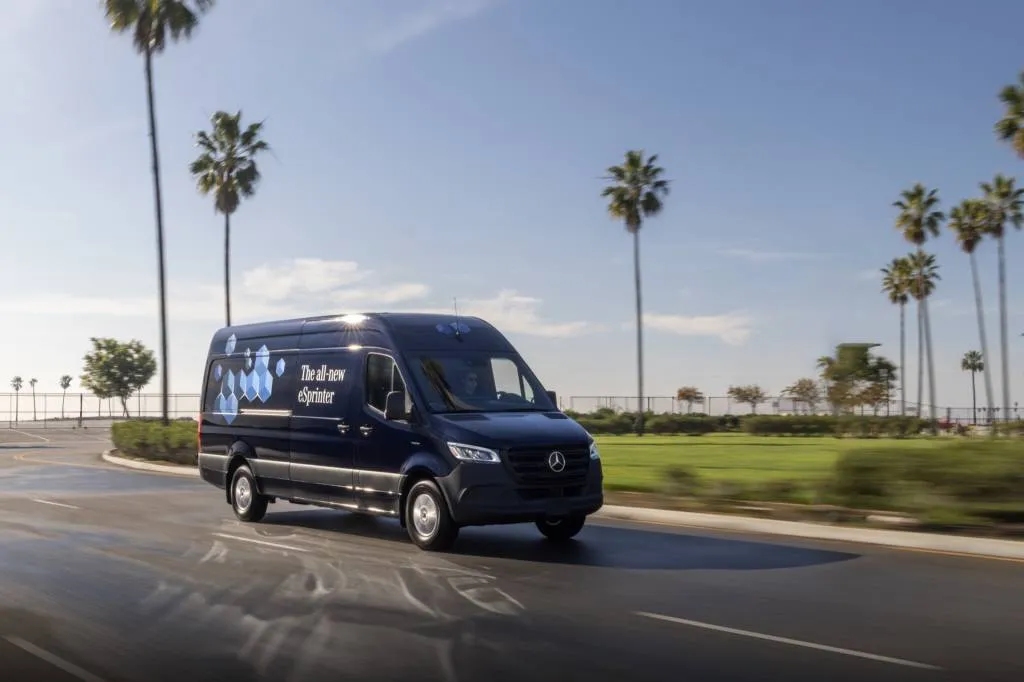
2024 Mercedes-Benz eSprinter
Last-mile delivery has been an electric-van emphasis for a few years, but the 2024 eSprinter, which is arriving now at dealerships in the U.S., is skipping past that crowd. The eSprinter—particularly as it’s being sold in the U.S.—is showing that it has bigger aspirations, and will only be sold here with its largest battery pack, offering a usable range of 113 kwh.
While the eSprinter will be offered in a wider range of versions and models in Europe, all U.S.-bound versions of it will be in this long-wheelbase cargo van form, with the high roof and the big pack.
It amounts to a vehicle that’s 280 inches long, riding on a 170-inch wheelbase, and amounting to an overall height of 107.1 inches. That’s just above 8-foot-11 if you’re watching out for those height signs in parking buildings.
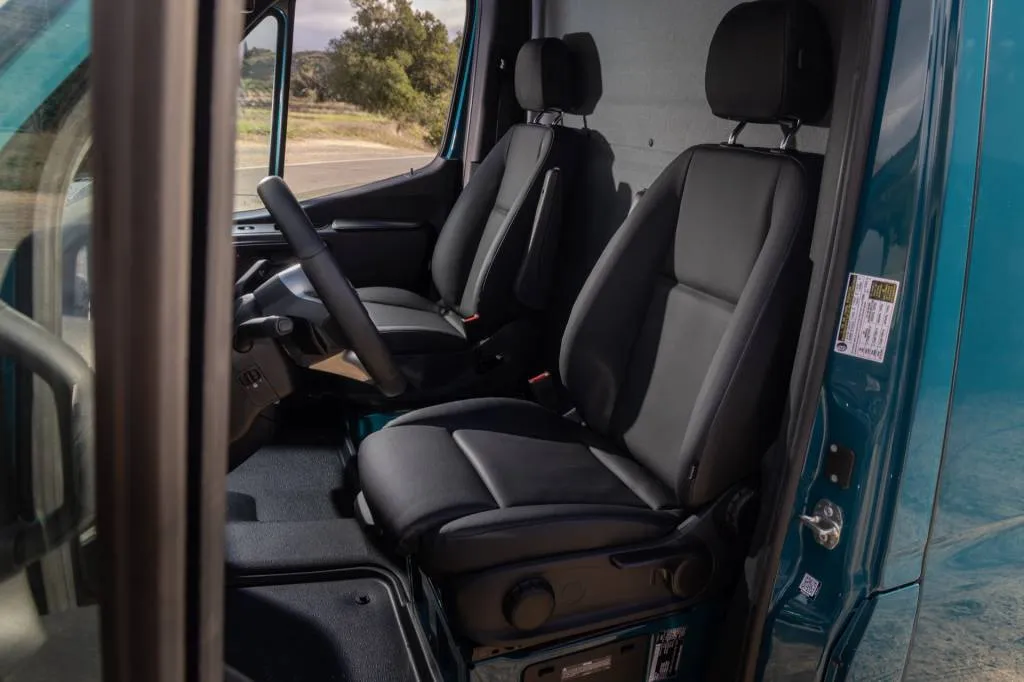
2024 Mercedes-Benz eSprinter
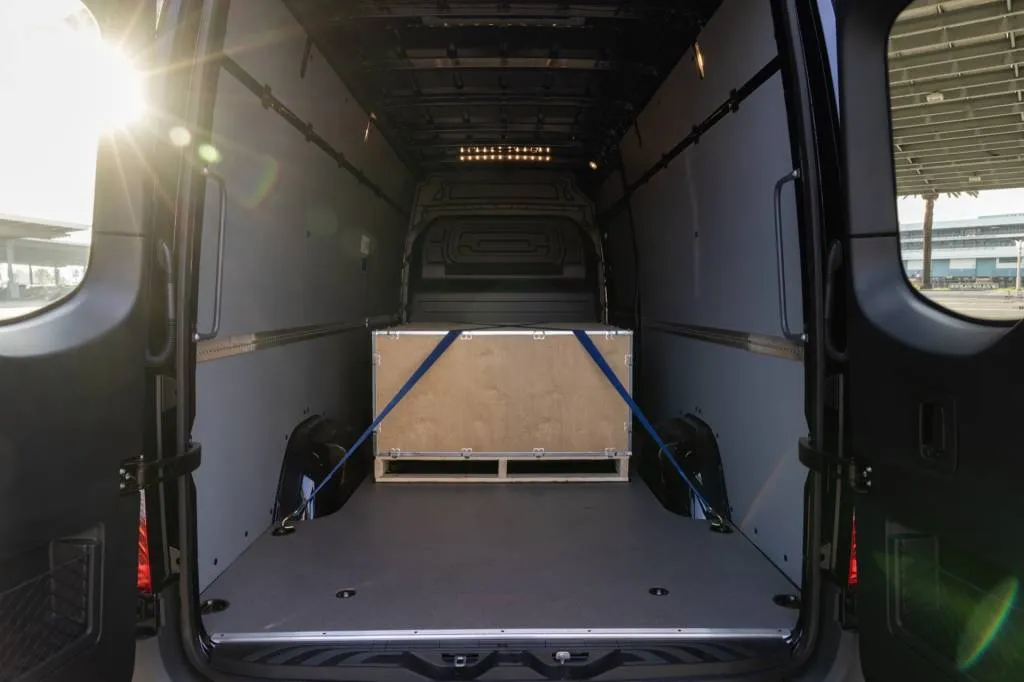
2024 Mercedes-Benz eSprinter
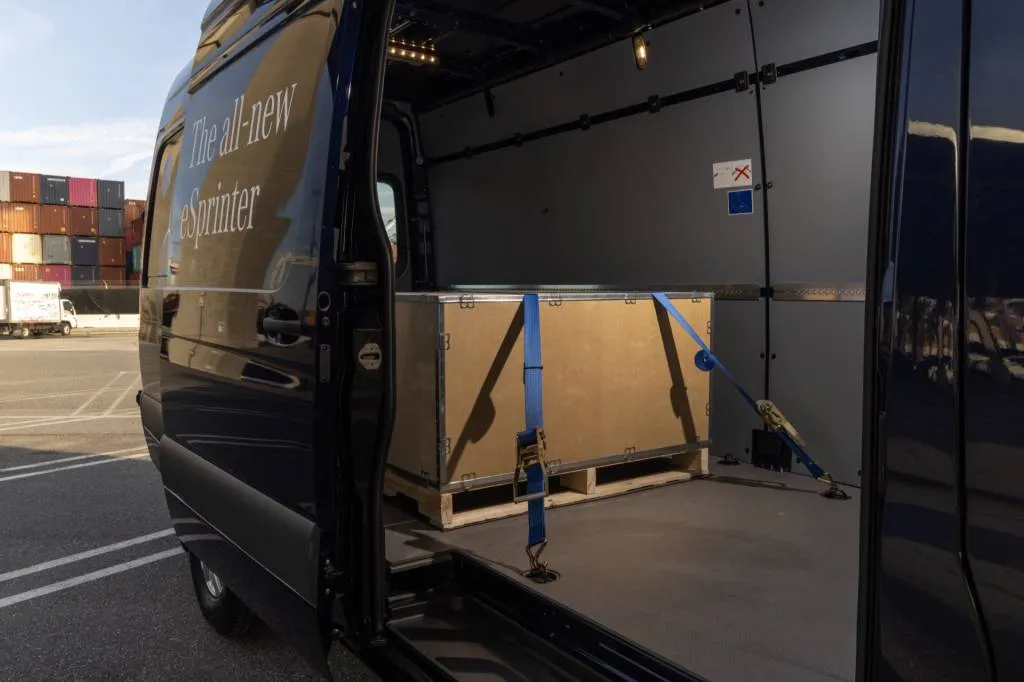
2024 Mercedes-Benz eSprinter
In this configuration, the eSprinter can hold 488.1 cubic feet of cargo, according to Mercedes, with a maximum payload of 2,624 pounds and gross vehicle weight up to 9,370 pounds. It’s also good to tow 4,200 pounds.
The biggest choice for those building an eSprinter, as of yet, is power. Base versions of the eSprinter start at $74,181 for the 100-kw version, while the 150-kw version starts at $77,611—both including a $2,295 destination fee. That equates to 134 hp or 201 hp, although Mercedes says that either version will deliver 295 lb-ft of torque for at least 30 seconds.
Running through the numbers, Mercedes promises better efficiency than what I saw in a quick drive review of the Ford E-Transit over a year ago—or what’s claimed by Ford. The eSprinter’s seats and ride quality are also better than that of the E-Transit. And the eSprinter goes farther, on less energy, than the Rivian EDV700. Although Rivian claimed a 201-mile EPA range from earlier versions, its switch to an LFP pack appears to have yielded a 153-mile range.
Mercedes lists the eSprinter as having a 273-mile range in the generous WLTP cycle, assuming a light load. EPA tests don’t officially apply to such vans, and they’re typically only representative of hypermiling and extreme tactics—although read on, because some results I saw proved me wrong on that statement.
At present, the E-Transit starts at $51,890, while the Rivian vans start at $83,000. Ram hasn’t yet priced its ProMaster Electric Van family, which looks like it slots more toward that last-mile focus and the E-Transit.
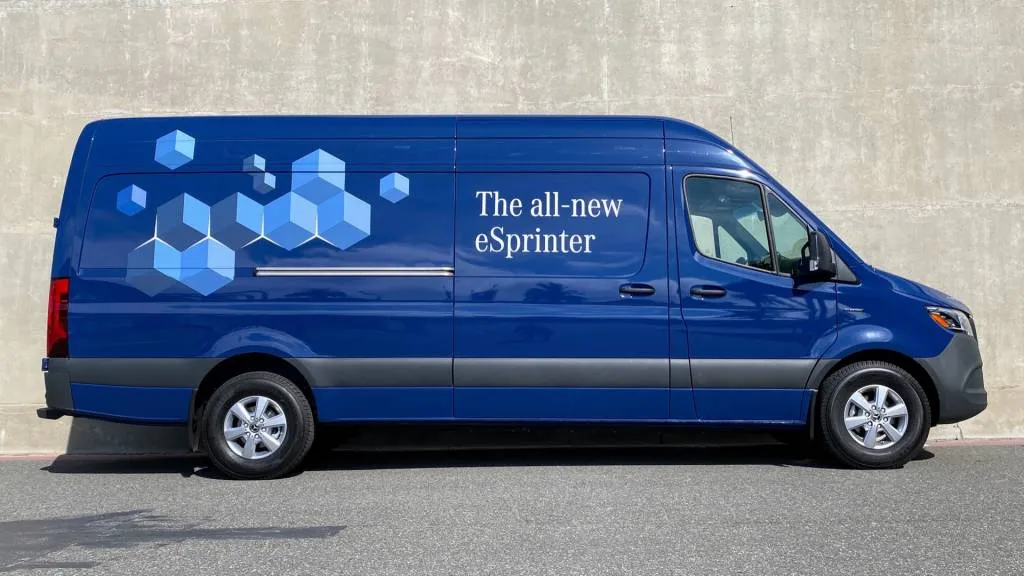
2024 Mercedes-Benz eSprinter
Efficiency and range is what sells it
What the eSprinter sells better to America than any other electric van I’ve driven is an abundance of driving range, enabled by what appears to be better efficiency than any comparable vehicle.
But first, I wanted to see if that efficiency would hold when driven like we so often see cargo vans driven in major-metro areas—briskly and, at times, up against their limits. So over a 62-mile drive from LAX to Newport Beach, stopping at the Port of Long Beach, we drove mostly like a delivery driver in a hurry, using mostly the eSprinter’s Comfort mode that makes full power easier to tap into.
Mercedes put a 440-pound load in the test eSprinters—partly to button down the ride, which can be a bit choppier in empty vans, but also to underscore its impact for efficiency, braking, handling, and more.
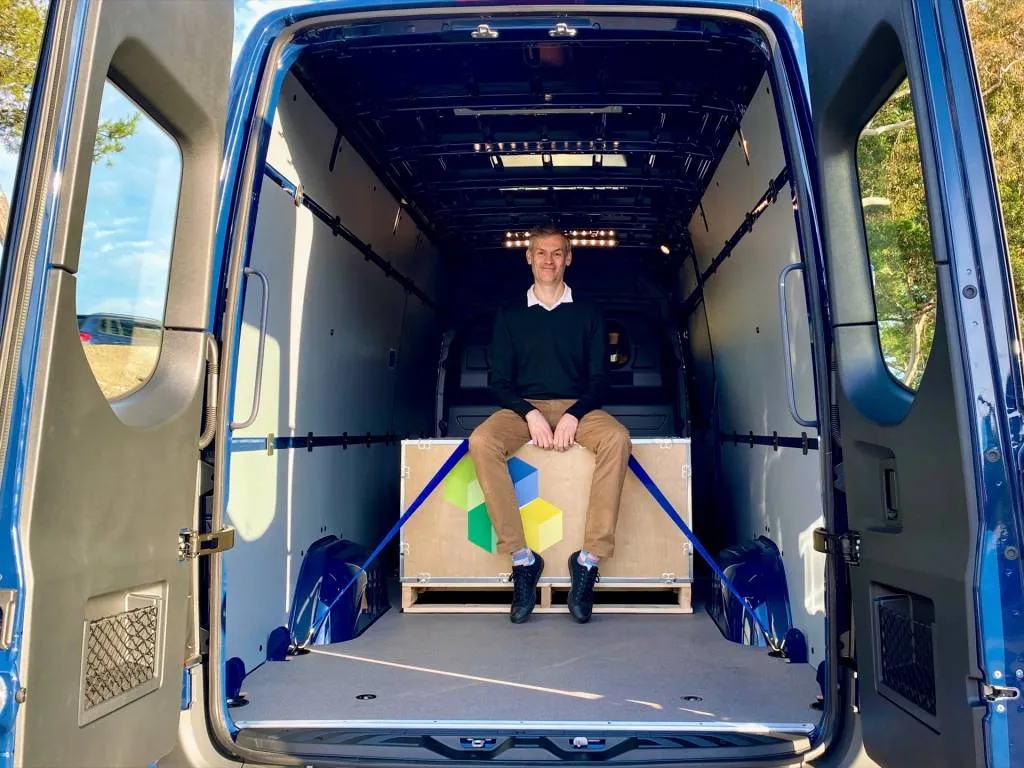
2024 Mercedes-Benz eSprinter
On that more exuberant trip—including a route that included a range of congested roads, at least one full-throttle start plus some foot-to-floor driving on the 405 and a brief time pegged at the 75-mph limiter, we averaged 1.9 miles per kwh according to the trip computer. That’s enough to go 215 miles on a full charge, without making any concessions to efficiency.
We used just a small sliver of range, with battery capacity dropping from about 85% at our start to 66% at the destination.
Later, on a nearly 35-mile loop including a mix of slower-moving coastal traffic plus faster-moving driving on some very hilly suburban roads—plus a stint on an expressway, reaching about 65 mph—it averaged 2.4 mi/kwh.
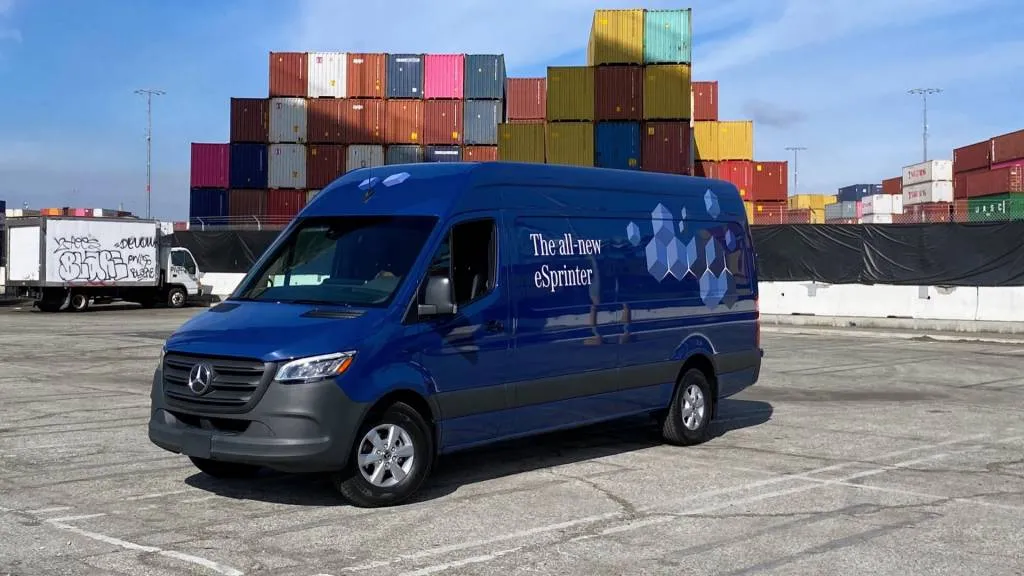
2024 Mercedes-Benz eSprinter
Multiplied out with the battery pack’s 113 kwh usable, that’s essentially matching the eSprinter’s 273-mile WLTP range. I’ve never come close to WLTP ratings in a vehicle without driving so slowly I’m a road hazard—and here I was moving more or less with the speed of traffic.
And yes, the thought occurred to me that despite having roughly double the frontal area of some compact crossover EVs, this giant van was going just as far per kwh.
I did three things on that run. I turned off the climate control entirely, dialed back the regenerative braking to coast to glide more, and engaged the Maximum Range mode.
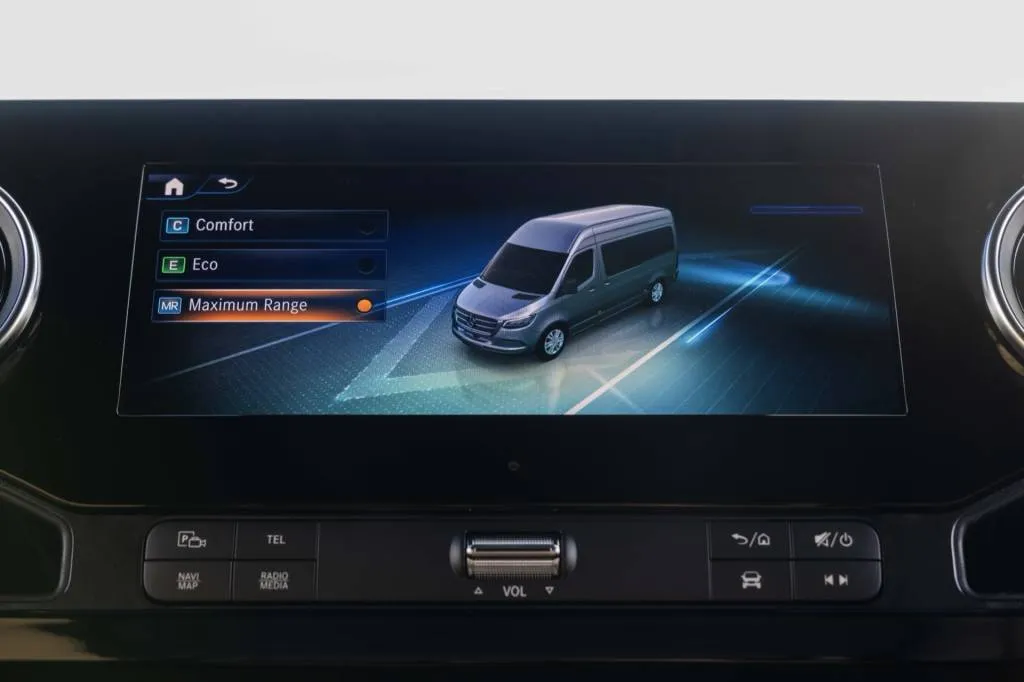
2024 Mercedes-Benz eSprinter – EV interface
Comfort mode allows all 150 kw from the propulsion system; Eco allows 100 kw, and Max Range just 80 kw. Climate operation is also reduced somewhat in Eco and more significantly in Max Range.
The eSprinter’s steering-wheel paddles bring you lots of choices—five in all—for brake regeneration, or recuperation. It spans from D–, which is the strongest, although still not quite a one-pedal mode, all the way to D++, which coasts and has no recuperation at all. D+ probably more closely parallels what driving a gas or diesel van is like. A long press on the right paddle brings D Auto, taking inputs from the radar sensors, hills, and other mapping information, but it doesn’t take into account driving style.
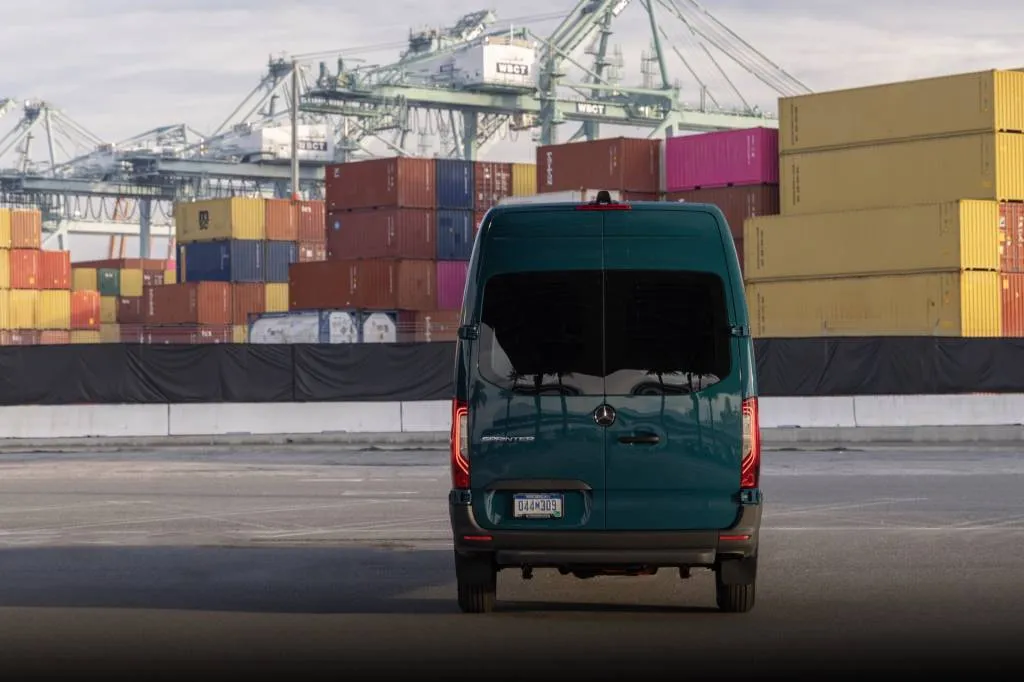
2024 Mercedes-Benz eSprinter
Ready for zero-emissions work of all kinds
Mercedes has made clear that with the eSprinter it’s aiming to focus on the delivery market.
Yet it’s clear that Mercedes has designed the eSprinter to potentially be kitted out for more than delivery. The permanent-magnet motor weighs just 286 pounds, and with all the other propulsion-related components located under the hood, it mounts in a way so as not to get in the way of the flat floor necessary for chassis models or upfits—both possible, Mercedes says, in the form of models like airport shuttle buses, ambulances, or even flatbed equipment haulers.
It’s all part of a strategy with this eSprinter to conceptualize the electric van as three modules: the front one with high-voltage components, the middle one with the integrated flat battery weighing just over 1,000 pounds, and the rear with the single-motor system.
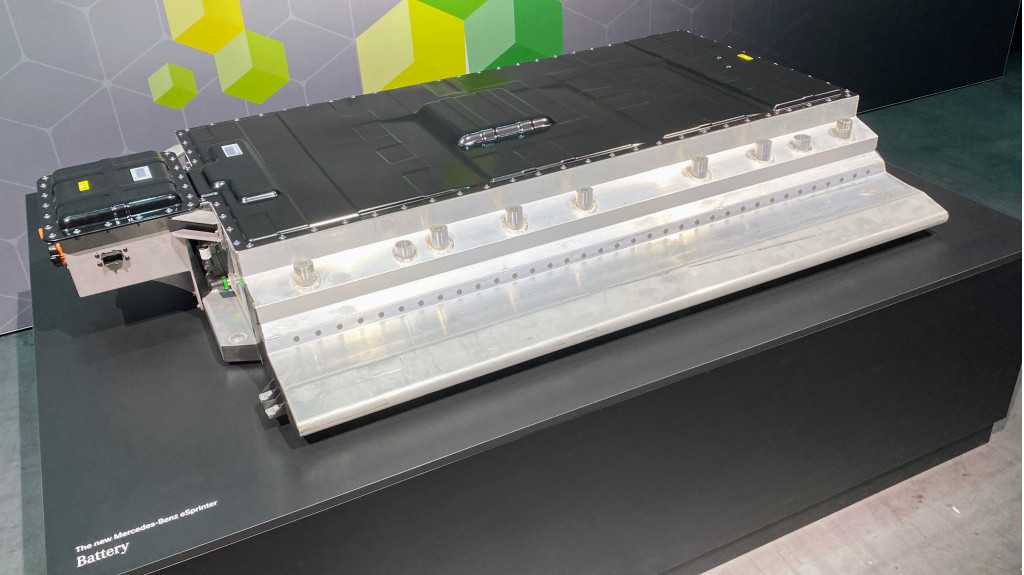
2024 Mercedes-Benz eSprinter
As delivered in U.S. form, the eSprinter can be fitted with shelving, workbenches, or heavy-duty wood floors to support heavy loads or turn it into a mobile workshop.
The eSprinter can be optioned with a version of Mercedes’ MBUX infotainment system that allows cloud-based services in addition to navigation, entertainment, and detailed displays about the propulsion system. It offers a 10.3-inch touchscreen display, voice activation, and steering-wheel controls with a mix of haptic and physical inputs—essentially the same as you would encounter in Mercedes passenger models. I liked the amount of information on tap through the center screen, while Mercedes opted to keep the gauge cluster display itself simple.
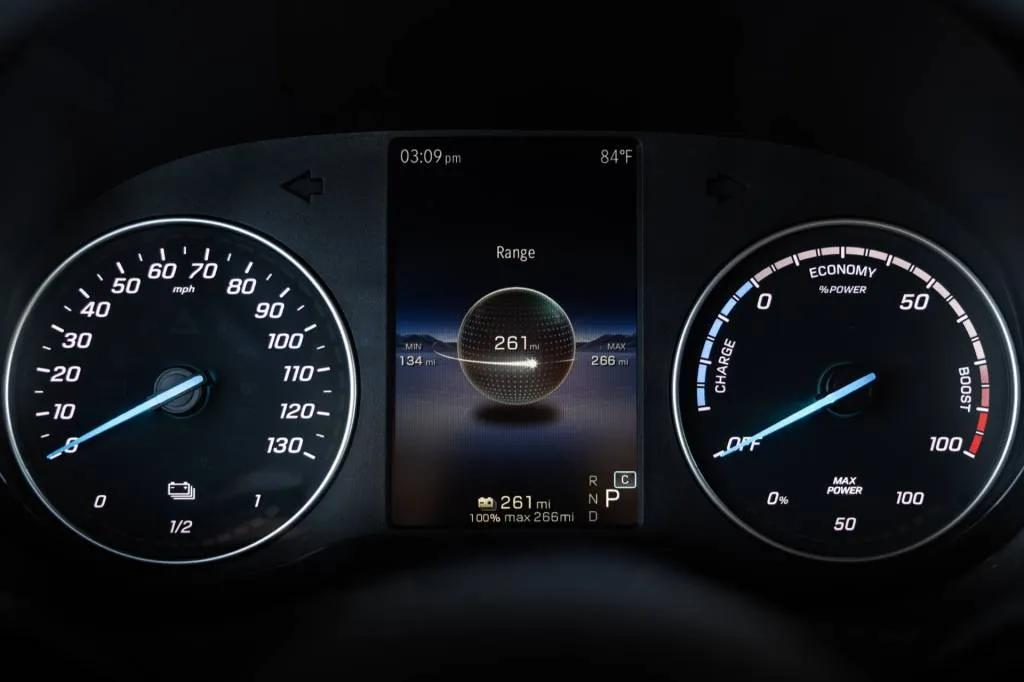
2024 Mercedes-Benz eSprinter
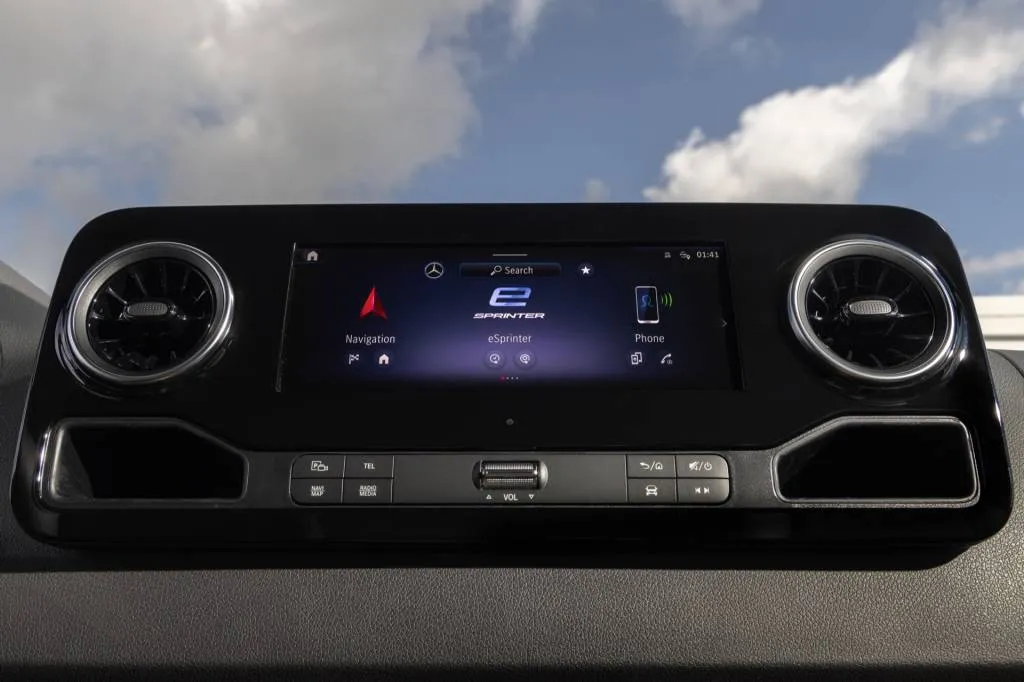
2024 Mercedes-Benz eSprinter
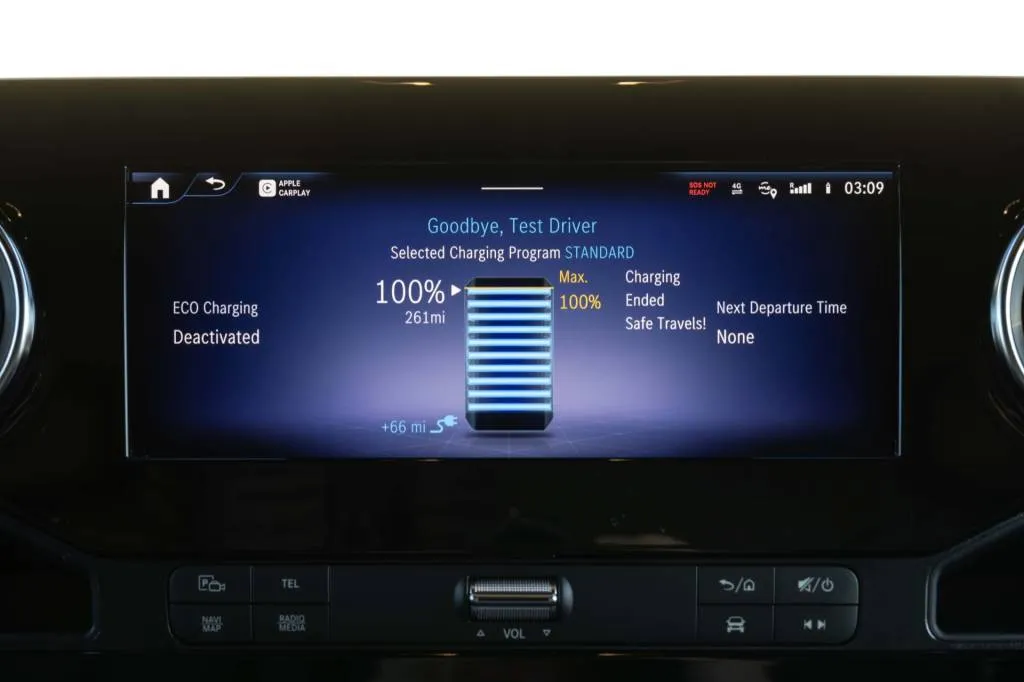
2024 Mercedes-Benz eSprinter – EV interface
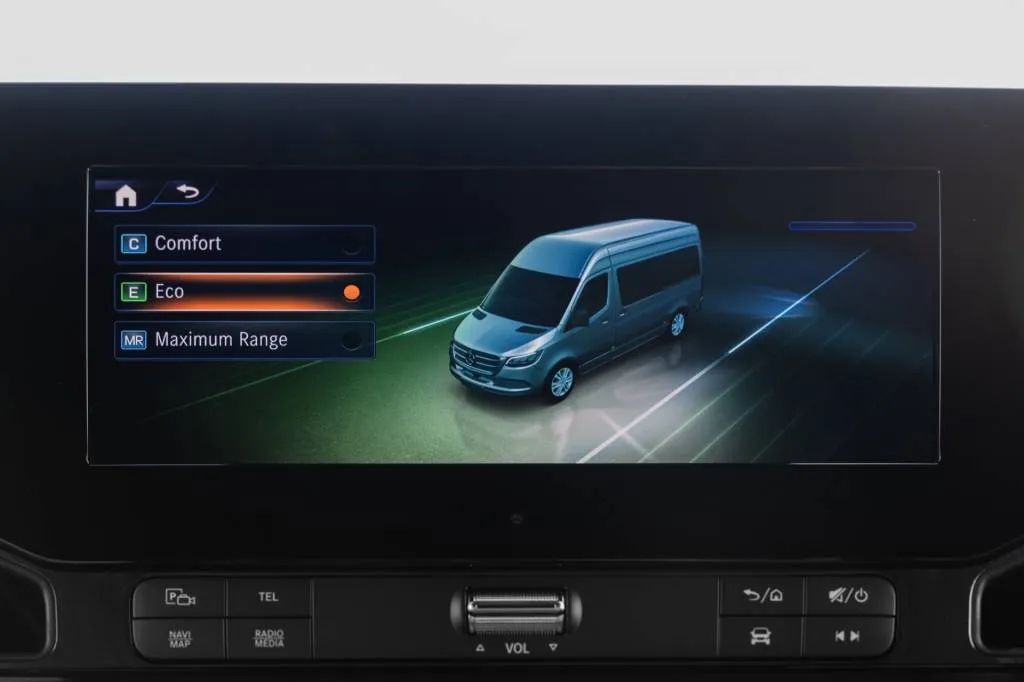
2024 Mercedes-Benz eSprinter
Further options on the eSprinter include a heated windshield, a heated steering wheel, power-folding mirrors, automatic climate control, and an alarm system.
One other extra, the digital rearview mirror, we’d consider a must if ordering either a single one or a fleet of these. I’m generally not a fan of digital rearview mirrors and the effect they have on field of focus, but here it was a welcome tool, as it expands the field of view wide and gives you a much better idea how close you are to the back of a parking spot. And let’s be honest, this is a vehicle that’s going to be just barely fitting into spots.
LFP battery pack is a smart way to follow diesel
The battery pack incorporates a lithium iron phosphate (LFP) chemistry that’s free of cobalt and nickel—in prismatic cells from CATL. Mercedes has pointed to the cells as being ideal for commercial use and allowing less degradation per driving cycle, especially in fleet use that might include regular charging to 100%.
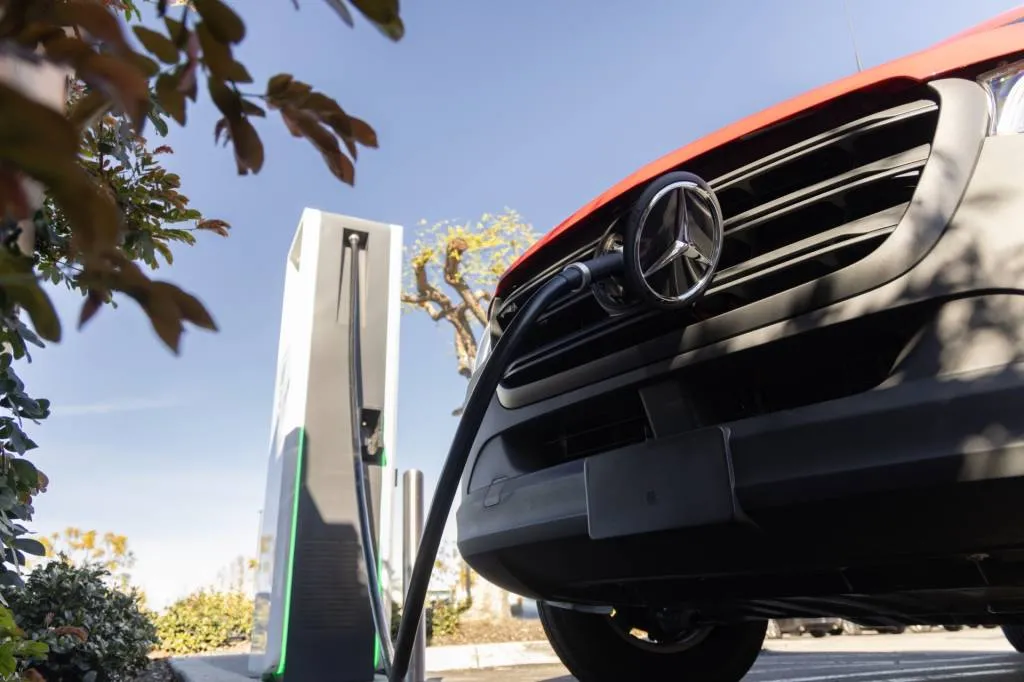
2024 Mercedes-Benz eSprinter
The U.S. eSprinter comes with a 9.6-kw onboard charger, allowing a full charge overnight with a 240-volt wallbox for most business uses. It also has CCS DC fast charging—50 kw standard, but with its optional 115-kw peak it allows a 10-80% charge in about 42 minutes.
Mercedes is covering the battery for 70% of its original capacity for 8 years or 100,000 miles. In what seems like an assuring nod toward power users accustomed to diesels, an “optional battery certificate” can extend that to 8 years or 185,000 miles—as it assumes an average of 445 miles a week year-round.
The eSprinter does come with both battery warming and preconditioning that will allow both the cabin and battery pack to be warmed—either for charging, or for setting out on very cold mornings. It’s a necessary detail for the LFP cells, which can be more sluggish in cold-weather extremes.
Officials wouldn’t say exactly when the Tesla-based NACS charge port might show up in these electric vans, but it won’t be in the first year or two.
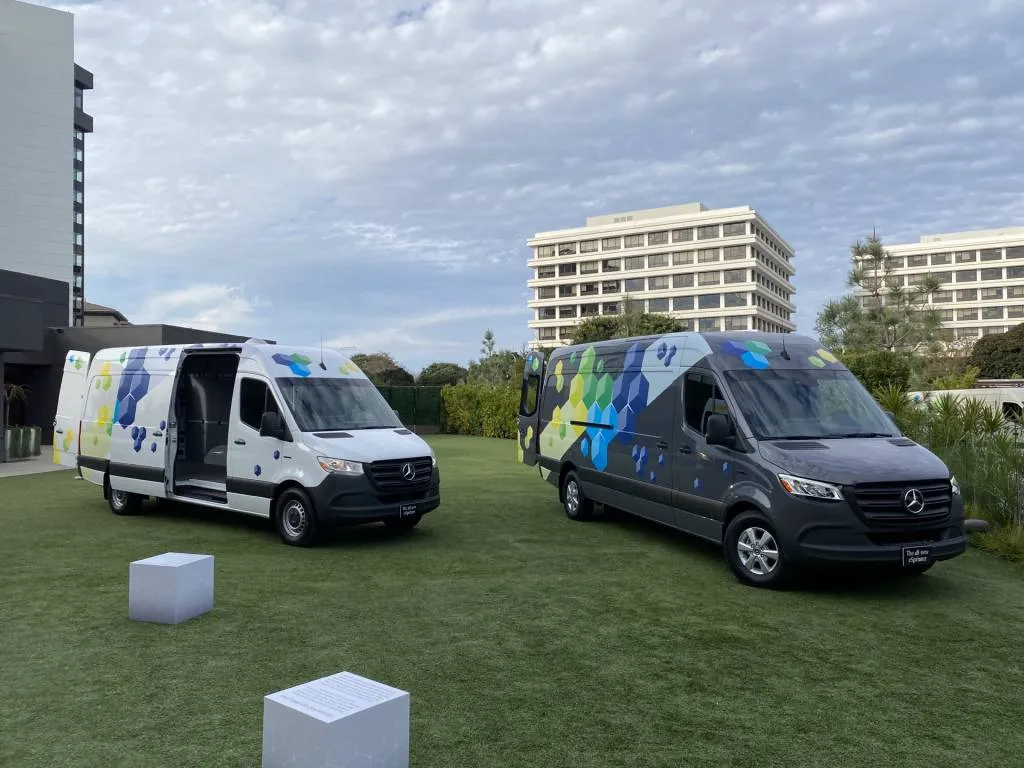
2024 Mercedes-Benz eSprinter
Previewing electric passenger vans, RVs, and more
The eSprinter is being built at three global locations—in Germany, at Ludwigsfelde and Düsseldorf, and in the U.S. at North Charleston, South Carolina. U.S.-market eSprinters are all due to be U.S.-built.
This eSprinter is in effect a stopgap, albeit an important one. Next-generation electric vans built on the Van.EA architecture will debut in 2026, offering a wider range of drive configurations including all-wheel drive. Unlike this generation, they’ll be intended to eventually fully replace combustion-engine vans.
These are important steps for Mercedes’ to achieve its targets of 20% of its van sales to be electric by 2026 and 50% by 2030. With Van.EA, Mercedes has already said that it plans to offer “all-electric midsize luxury vans” in the U.S. and China, plus “a new model line of electric RVs.”
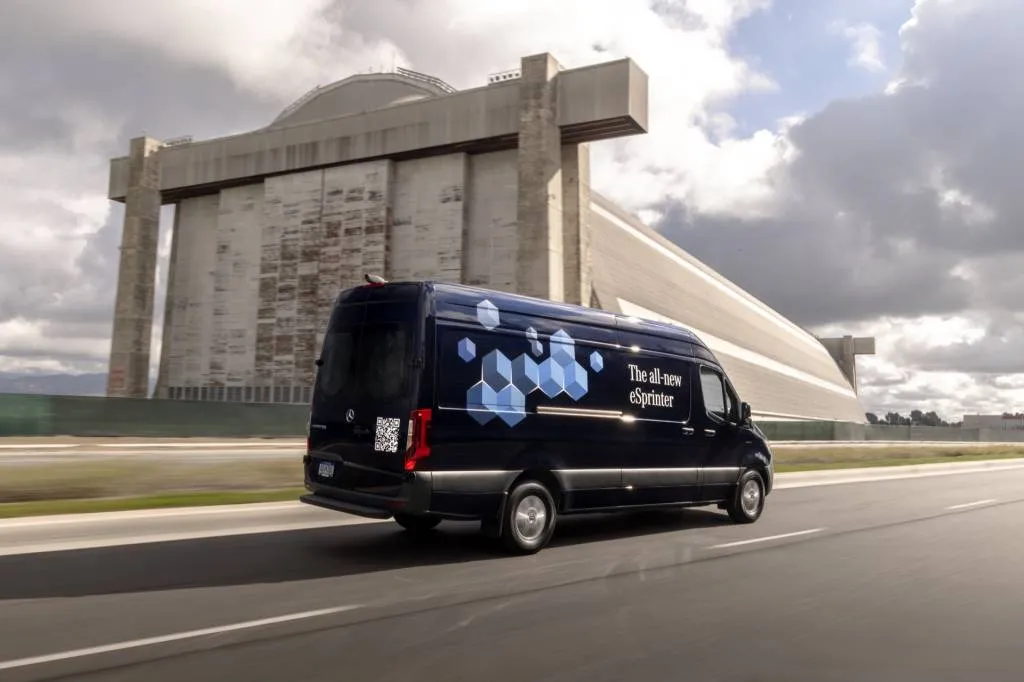
2024 Mercedes-Benz eSprinter
As it has done with its passenger EVs, including the EQE and EQS, Mercedes-Benz appears to be underpromising on range in its claimed numbers—and that’s a good thing.
The eSprinter is launching with some very favorable numbers, and an American-sized approach in all respects. After driving it, it’s clear that the electric vanlife is near.
For countless small businesses and delivery purposes around the country, this fits the bill right now. And soon, the fun will follow.
Mercedes-Benz provided accommodations and food, and covered some transportation, so that Green Car Reports could provide these firsthand vehicle impressions.
Add a comment Cancel reply
Comments (0)
Related posts


Electric SUVs: Top 6 Models for Family Trips











